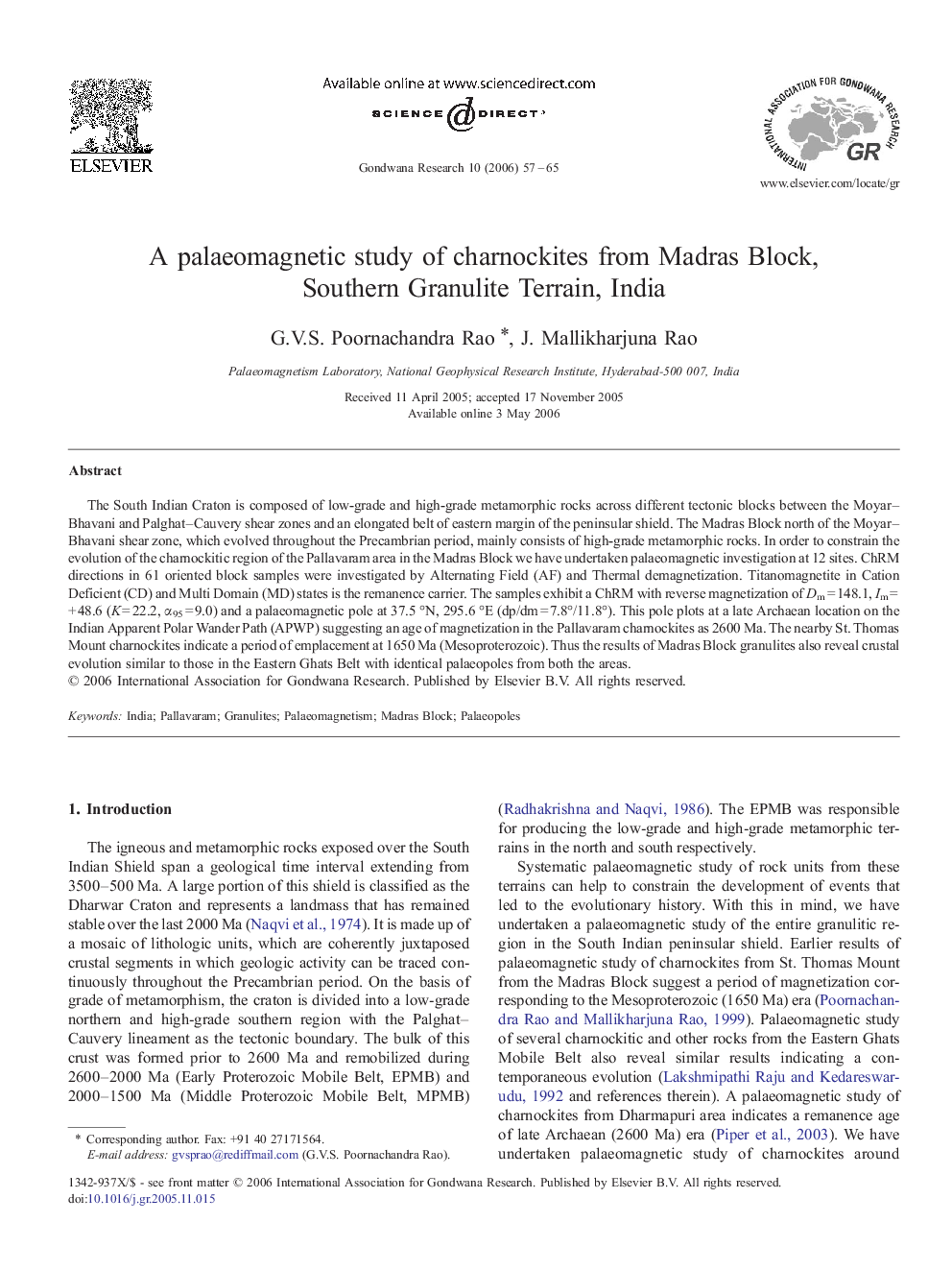| Article ID | Journal | Published Year | Pages | File Type |
|---|---|---|---|---|
| 4727906 | Gondwana Research | 2006 | 9 Pages |
The South Indian Craton is composed of low-grade and high-grade metamorphic rocks across different tectonic blocks between the Moyar–Bhavani and Palghat–Cauvery shear zones and an elongated belt of eastern margin of the peninsular shield. The Madras Block north of the Moyar–Bhavani shear zone, which evolved throughout the Precambrian period, mainly consists of high-grade metamorphic rocks. In order to constrain the evolution of the charnockitic region of the Pallavaram area in the Madras Block we have undertaken palaeomagnetic investigation at 12 sites. ChRM directions in 61 oriented block samples were investigated by Alternating Field (AF) and Thermal demagnetization. Titanomagnetite in Cation Deficient (CD) and Multi Domain (MD) states is the remanence carrier. The samples exhibit a ChRM with reverse magnetization of Dm = 148.1, Im = + 48.6 (K = 22.2, α95 = 9.0) and a palaeomagnetic pole at 37.5 °N, 295.6 °E (dp/dm = 7.8°/11.8°). This pole plots at a late Archaean location on the Indian Apparent Polar Wander Path (APWP) suggesting an age of magnetization in the Pallavaram charnockites as 2600 Ma. The nearby St. Thomas Mount charnockites indicate a period of emplacement at 1650 Ma (Mesoproterozoic). Thus the results of Madras Block granulites also reveal crustal evolution similar to those in the Eastern Ghats Belt with identical palaeopoles from both the areas.
